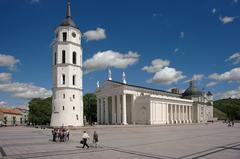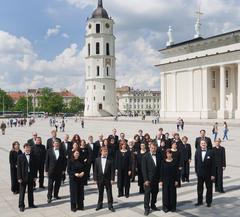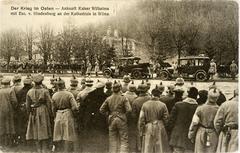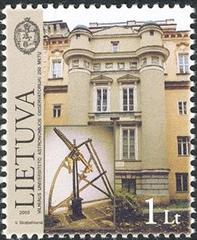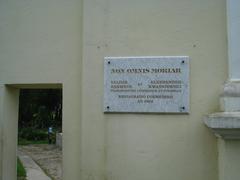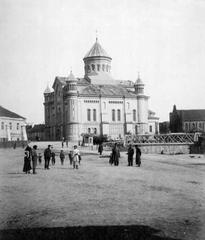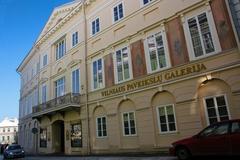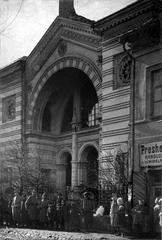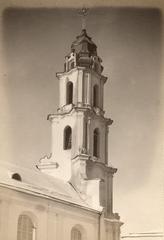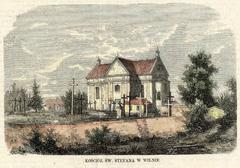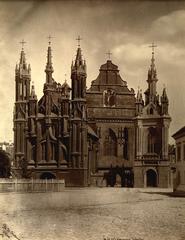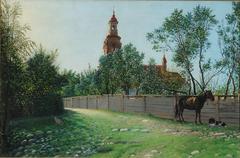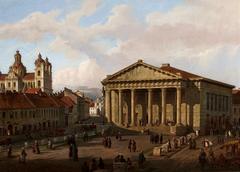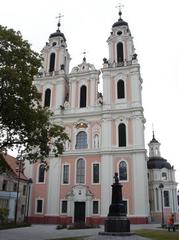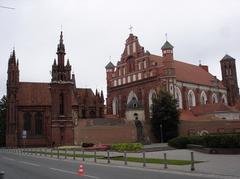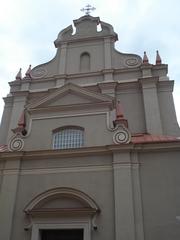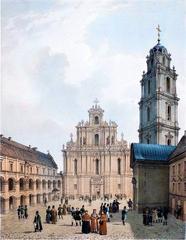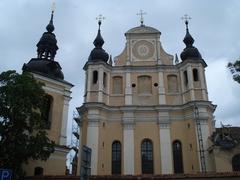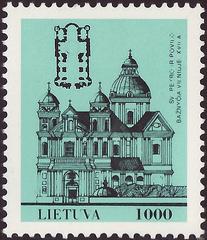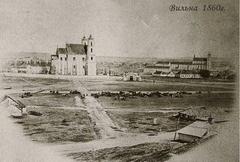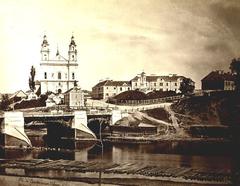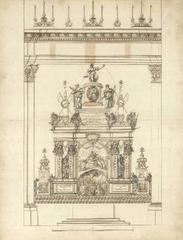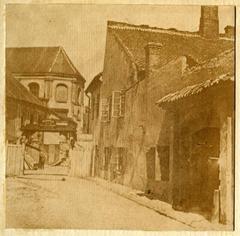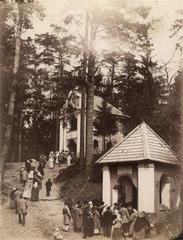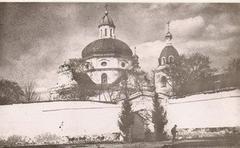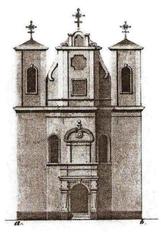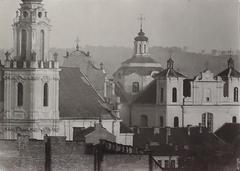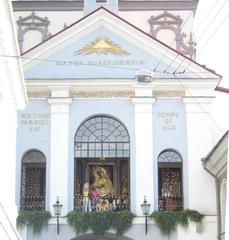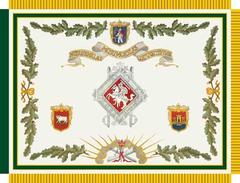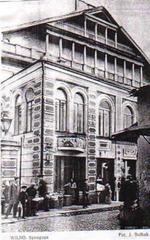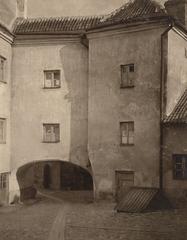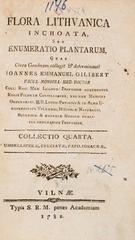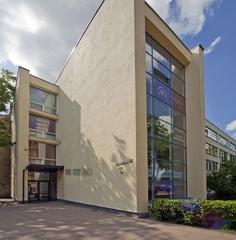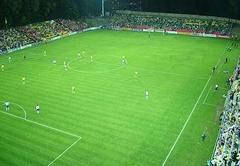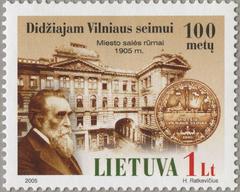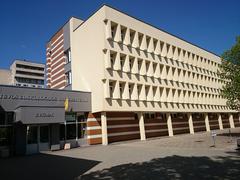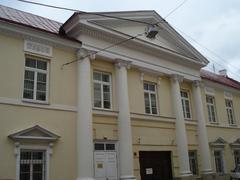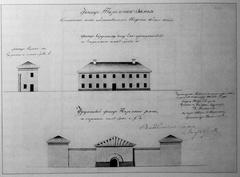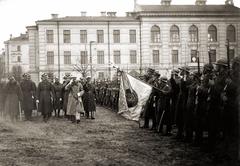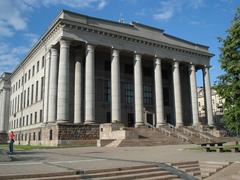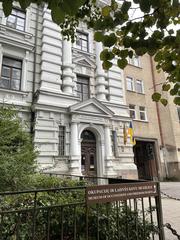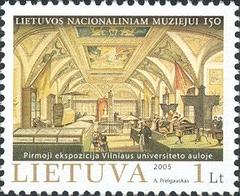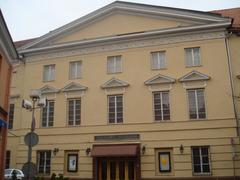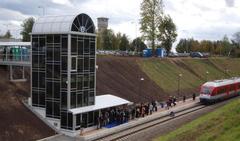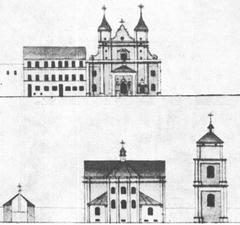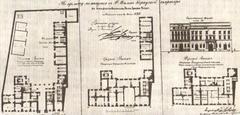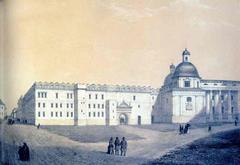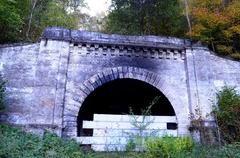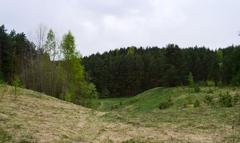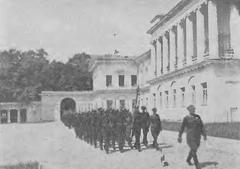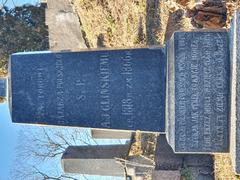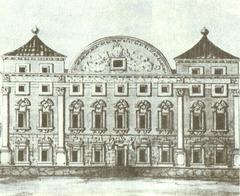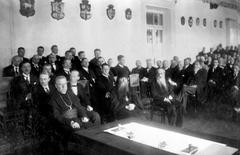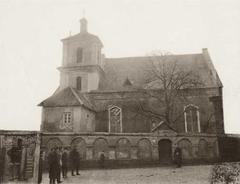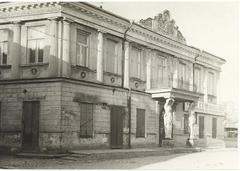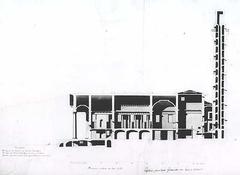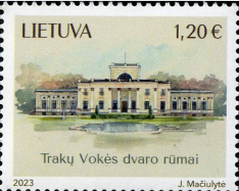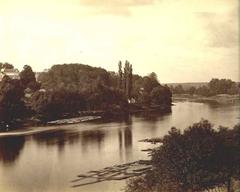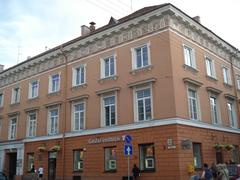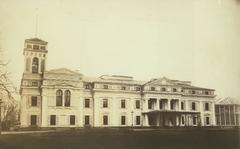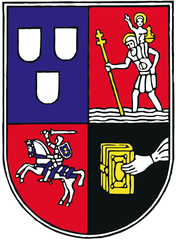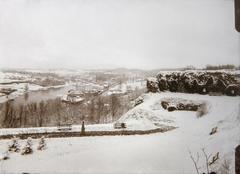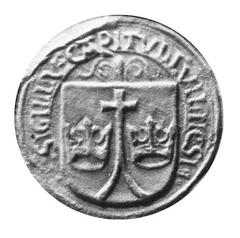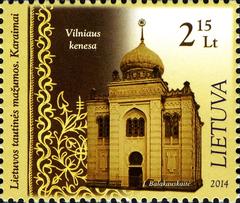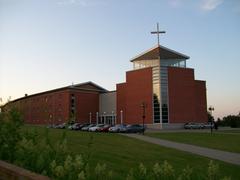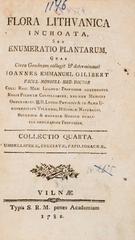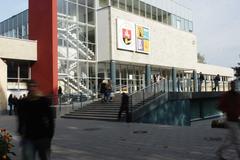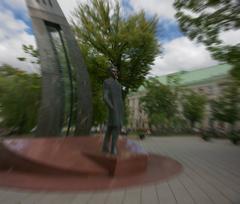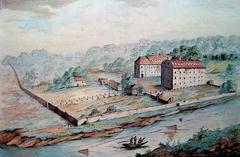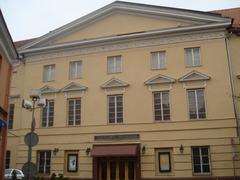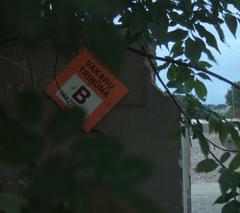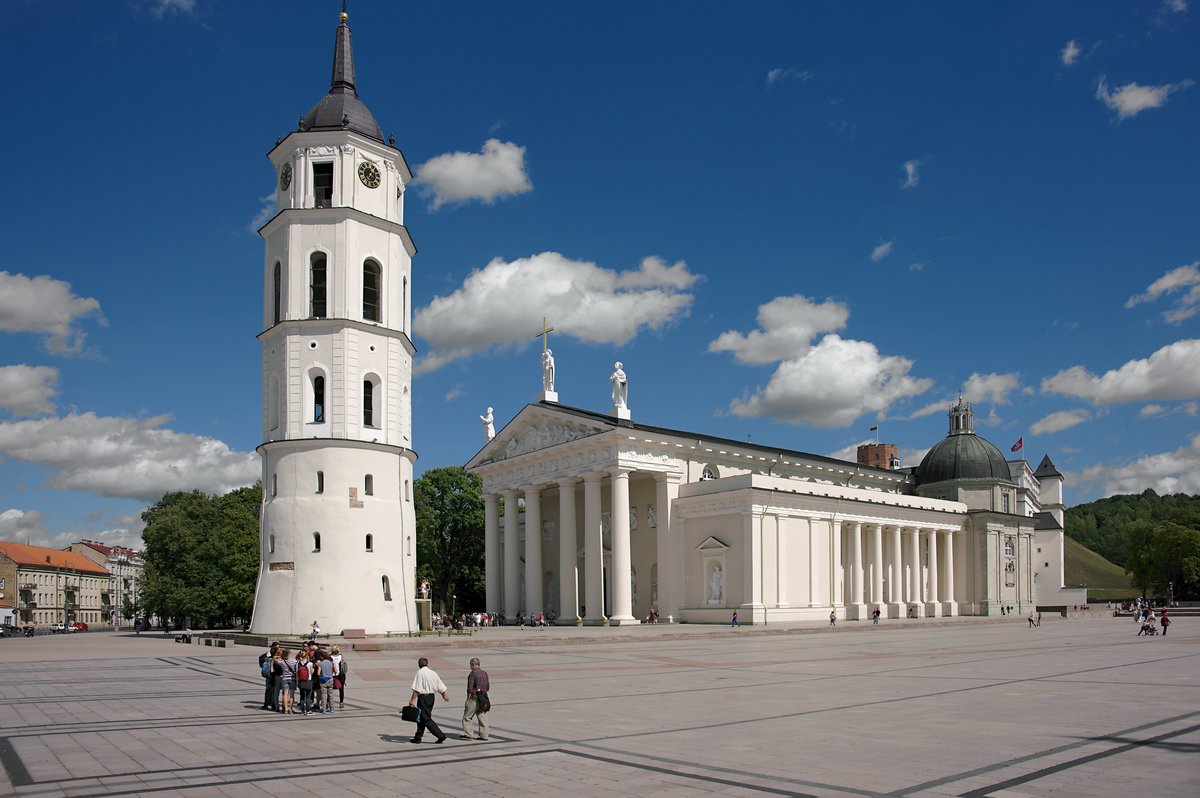
Guide to Visiting Vilniaus Šv. Stanislovo ir Šv. Vladislovo Arkikatedra Bazilika, Vilnius, Lithuania
Date: 18/07/2024
Introduction
Vilniaus Šv. Stanislovo ir Šv. Vladislovo arkikatedra bazilika, commonly known as Vilnius Cathedral, is a cornerstone of Lithuania’s rich history and religious heritage. Situated in the heart of Vilnius, this remarkable monument has undergone numerous architectural transformations, reflecting the dynamic cultural and historical shifts of the region. From its initial wooden construction commissioned by King Mindaugas in the 13th century to its Gothic, Renaissance, Baroque, and Neoclassical redesigns, the cathedral stands as a testament to the evolving artistic and religious influences through the ages (Vilnius Cathedral History).
The cathedral’s significance extends beyond its architectural grandeur. It serves as the main Roman Catholic cathedral in Lithuania and the seat of the Archdiocese of Vilnius. The crypts and catacombs within its walls hold the remains of notable historical figures, including Grand Duke Vytautas the Great and King Alexander Jagiellon, making it a site of immense historical and cultural importance (Vilnius Cathedral Restoration).
This guide aims to provide a comprehensive overview of the Vilnius Cathedral, covering its historical background, architectural highlights, visitor information, and travel tips. Whether you are an architecture enthusiast, history buff, or casual traveler, this article will equip you with all the necessary information to make the most of your visit to this iconic Lithuanian landmark.
Table of Contents
- Introduction
- Historical Background
- Modern Significance
- Architectural Highlights
- Visitor Information
- Frequently Asked Questions
- Conclusion
Historical Background
Early Beginnings and Construction
The Vilnius Cathedral’s origins date back to the 13th century, during the reign of King Mindaugas, the first and only King of Lithuania. It is believed that Mindaugas, after his conversion to Christianity, ordered the construction of the first cathedral on this site around 1251. This initial structure was likely a wooden building, reflecting the architectural styles and materials available at the time.
Gothic and Renaissance Transformations
In the late 14th century, Grand Duke Vytautas the Great initiated the construction of a Gothic-style cathedral to replace the original wooden structure. This new cathedral was consecrated in 1387, coinciding with the official Christianization of Lithuania. The Gothic cathedral featured a cruciform layout, with a nave and two aisles, and was adorned with intricate stone carvings and stained glass windows.
In the 16th century, the cathedral was rebuilt in the Renaissance style. This transformation was led by the Italian architect Giovanni Cini da Siena, who introduced classical elements such as columns, pilasters, and a more symmetrical layout. The Renaissance cathedral also included a new bell tower, which became a prominent feature of the Vilnius skyline.
Baroque Influence and the Great Fire
The 17th century brought further changes to the cathedral, as it was heavily influenced by the Baroque style. This period saw the addition of ornate chapels, altars, and frescoes, which enhanced the cathedral’s grandeur and artistic significance. However, the cathedral’s history was also marked by a series of disasters, including fires and wars. The most devastating was the Great Fire of Vilnius in 1610, which severely damaged the cathedral and necessitated extensive repairs and reconstructions.
Neoclassical Rebuilding
The most significant transformation of the Vilnius Cathedral occurred in the late 18th century, under the direction of the renowned architect Laurynas Gucevičius. Gucevičius was commissioned to rebuild the cathedral in the Neoclassical style, which was gaining popularity across Europe at the time. The Neoclassical design emphasized simplicity, symmetry, and grandeur, with a focus on classical Greek and Roman architectural elements.
Gucevičius’s design included a grand portico with six Corinthian columns, a triangular pediment, and a spacious interior with a central nave and side chapels. The cathedral’s exterior was adorned with statues of saints and other religious figures, while the interior featured elegant stucco decorations and frescoes. The Neoclassical cathedral was consecrated in 1801 and remains largely unchanged to this day.
Soviet Era and Restoration
The 20th century brought significant challenges to the Vilnius Cathedral, particularly during the Soviet occupation of Lithuania. In 1949, the Soviet authorities closed the cathedral and converted it into a warehouse. Many of the cathedral’s religious artifacts and artworks were removed or destroyed, and the building fell into disrepair.
It was not until the late 20th century, with the collapse of the Soviet Union and the restoration of Lithuanian independence, that efforts to restore the cathedral began in earnest. In 1989, the cathedral was reconsecrated, and extensive restoration work was undertaken to repair the damage caused during the Soviet era. This restoration project aimed to preserve the cathedral’s historical and architectural integrity while making it accessible to the public once again.
Modern Significance
Today, the Vilnius Cathedral stands as a testament to Lithuania’s enduring faith and resilience. It serves as the main Roman Catholic cathedral in Lithuania and the seat of the Archdiocese of Vilnius. The cathedral is not only a place of worship but also a cultural and historical landmark, attracting visitors from around the world.
The cathedral’s crypts and catacombs are of particular interest to historians and archaeologists, as they contain the remains of many notable figures from Lithuanian history, including Grand Duke Vytautas the Great and King Alexander Jagiellon. The cathedral’s treasury houses a collection of religious artifacts, including chalices, vestments, and reliquaries, which provide insight into the rich liturgical traditions of Lithuania.
Architectural Highlights
The Vilnius Cathedral’s architectural highlights include its grand portico, adorned with statues of the Twelve Apostles, and its impressive bell tower, which offers panoramic views of Vilnius. The interior of the cathedral is equally stunning, with its high vaulted ceilings, intricate stucco work, and beautiful frescoes depicting scenes from the Bible and the lives of saints.
One of the most notable features of the cathedral is the Chapel of Saint Casimir, which houses the remains of Saint Casimir, the patron saint of Lithuania. The chapel is a masterpiece of Baroque art, with its ornate altar, gilded decorations, and frescoes depicting the life and miracles of Saint Casimir.
Visitor Information
Visiting Hours and Tickets
The Vilnius Cathedral is open to visitors daily, with specific visiting hours varying depending on the day and season. Generally, the cathedral is open from 7:00 AM to 7:00 PM. It is advisable to check the official website or contact the cathedral directly for the most up-to-date visiting hours.
Admission to the cathedral is free, but there may be a fee for guided tours or access to specific areas such as the crypts or treasury. Tickets can be purchased on-site or online through the official website.
Travel Tips
- Accessibility: The Vilnius Cathedral is wheelchair accessible, with ramps and elevators available for those with mobility issues.
- Nearby Attractions: The cathedral is located in the heart of Vilnius, close to other historical sites such as Gediminas’ Tower, the Palace of the Grand Dukes of Lithuania, and the Vilnius University campus.
- Special Events: The cathedral hosts various religious services, concerts, and cultural events throughout the year. Check the official website for a calendar of events.
- Photography: Photography is allowed inside the cathedral, but be respectful of ongoing services and other visitors. Some areas may have restrictions, so look for signage or ask for guidance.
Frequently Asked Questions
Q: What are the visiting hours of Vilnius Cathedral?
A: The cathedral is generally open from 7:00 AM to 7:00 PM daily. However, visiting hours may vary, so it is best to check the official website for the latest information.
Q: How much are the tickets for Vilnius Cathedral?
A: Admission to the cathedral is free, but there may be fees for guided tours or access to specific areas such as the crypts or treasury.
Q: Are there any nearby attractions to visit?
A: Yes, the cathedral is located near other historical sites such as Gediminas’ Tower, the Palace of the Grand Dukes of Lithuania, and the Vilnius University campus.
Q: Is the Vilnius Cathedral accessible for visitors with disabilities?
A: Yes, the cathedral is wheelchair accessible, with ramps and elevators available for those with mobility issues.
Conclusion
Vilniaus Šv. Stanislovo ir Šv. Vladislovo arkikatedra bazilika is more than just a religious site; it is a monumental testament to Lithuania’s enduring faith, resilience, and rich cultural heritage. From its early beginnings as a wooden church in the 13th century to its current Neoclassical grandeur, the cathedral encapsulates the architectural and historical evolution of Vilnius. The various transformations it has undergone—from Gothic to Baroque to Neoclassical—reflect the changing artistic and religious influences that have shaped its history (Baroque Architecture; Neoclassical Architecture).
Today, the Vilnius Cathedral continues to serve as the main Roman Catholic cathedral in Lithuania, attracting visitors from around the world who come to marvel at its architectural beauty and delve into its rich history. Its accessibility and well-organized visitor services make it a must-visit landmark for anyone traveling to Vilnius. Whether you are interested in exploring its crypts, admiring its frescoes, or simply soaking in the serene atmosphere, the Vilnius Cathedral offers an unforgettable experience (Vilnius Cathedral Tickets).
For more information, updates on events, and additional travel tips, download the Audiala mobile app and follow us on social media. Your visit to Vilnius Cathedral will undoubtedly be a highlight of your trip to Lithuania, offering both spiritual enrichment and historical insight.
References
- Vilnius Cathedral History. (n.d.). Retrieved from https://www.vilnius-tourism.lt/en/what-to-see/places-to-visit/churches/vilnius-cathedral/
- Vilnius Cathedral Restoration. (n.d.). Retrieved from https://www.vilnius-tourism.lt/en/what-to-visit/churches/vilnius-cathedral-restoration/
- Baroque Architecture. (n.d.). In Encyclopaedia Britannica. Retrieved from https://www.britannica.com/art/Baroque-architecture
- Neoclassical Architecture. (n.d.). In Encyclopaedia Britannica. Retrieved from https://www.britannica.com/art/Neoclassical-architecture
- Vilnius Cathedral Tickets. (n.d.). Retrieved from https://www.vilnius-tourism.lt/en/what-to-see/places-to-visit/churches/vilnius-cathedral-tickets/
